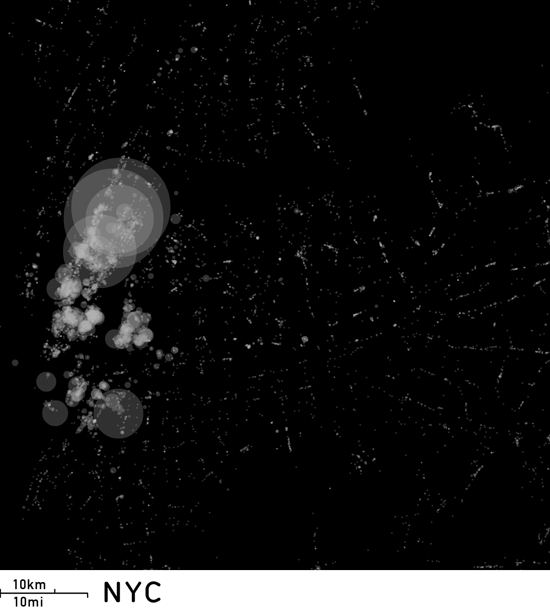[ source ]

“It’s obvious that a city, or even a company, has network structure. Not even at the social level, just at the physical level, a city has roads and gas stations and pipelines, which are networks. But it also has something more abstract and, in some cases, something more sophisticated than in biology, and that is networks of social interactions.”
- Geoffrey West, Santa Fe Institute
This map of New York City was produced with data gathered from location-based social network Foursquare, providing an image of the city as an agglomeration of social interactions.
Users interact with Foursquare using GPS-enabled mobile phones, ‘checking in’ at social venues in order to communicate their whereabouts to their network of friends. As the Foursquare network is strongly coupled to the physical landscape, we can use the data it produces to show how the hitherto invisible realm of social interactions expresses urban spatial characteristics.
In this map each social venue (bar, restaurant, café, etc) is rendered as a translucent dot. Dot diameter is proportional to cumulative activity (checkins) at the venue over a 15 month period.
The overlapping of dots gives us a visual measure of social activity intensity in the city, showing a concentration around Manhattan, but also hotspots in Willamsburg, Prospect Heights and other areas of the city.
For a wider discussion of this data, see the Archipelago project.
See Also: Fingerprint, Sensing, archipelago, Flowprint